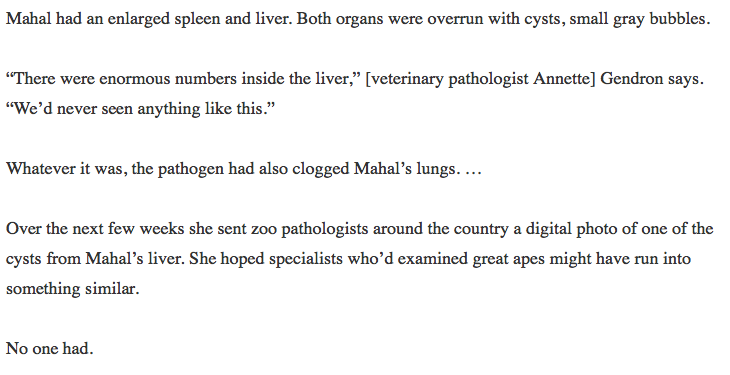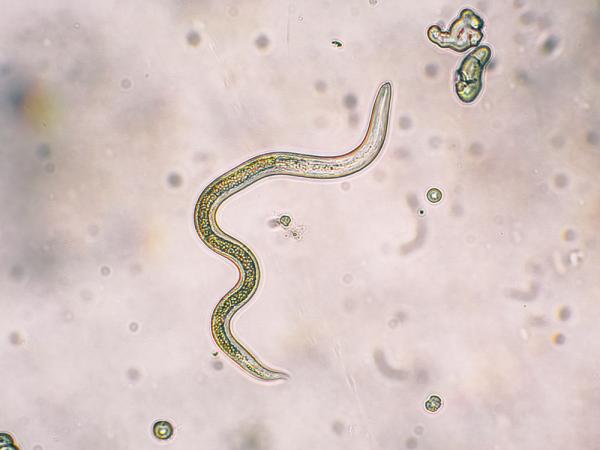As if on cue, two articles on transmission of diseases came across my computer screen simultaneously. The first, which we recently published – written by the PhD Steve Schow, who has decades of experience in the pharmaceutical and biotech fields – I read with great interest.
The second, a significant and impressive piece of research and reporting addressing similar areas – how infections spread from animals to humans – was so engrossing that we wanted to call your attention to it, as well. Taken together these two complementary pieces shed light on an important, overlooked topic.
Since the first article, titled "The Next Plague Part 2: 1940 - New Infections Arrive, But From Where?" is already on our site, let's focus on the second, written by Mark Johnson, a reporter for the Milwaukee Journal Sentinel. His extensive article centers on the mysterious death of a beloved orangutan at the Milwaukee County Zoo, and the scientific work subsequently undertaken to determine the cause.
Johnson's work, titled "Animal to man, fear of the next pandemic," examines the medical circumstances surrounding the primate, Mahal, who lived just five years – despite typical life expectancies for orangutans, Johnson reports, that range from 35 to 50 years.
Without giving away the payoff of his strong reporting and engaging storytelling, here's an excerpt from the article:

Mr. Johnson went on to discuss another startling, separate medical investigation, one that described how cancer cells from a parasite "gave a human cancer."
Johnson writes:

Both articles are fascinating and thought provoking. We present them to our readers with the hope they shed additional light on this important area of biological research, as well as on methods to prevent the spread of disease that are frequently neglected.




